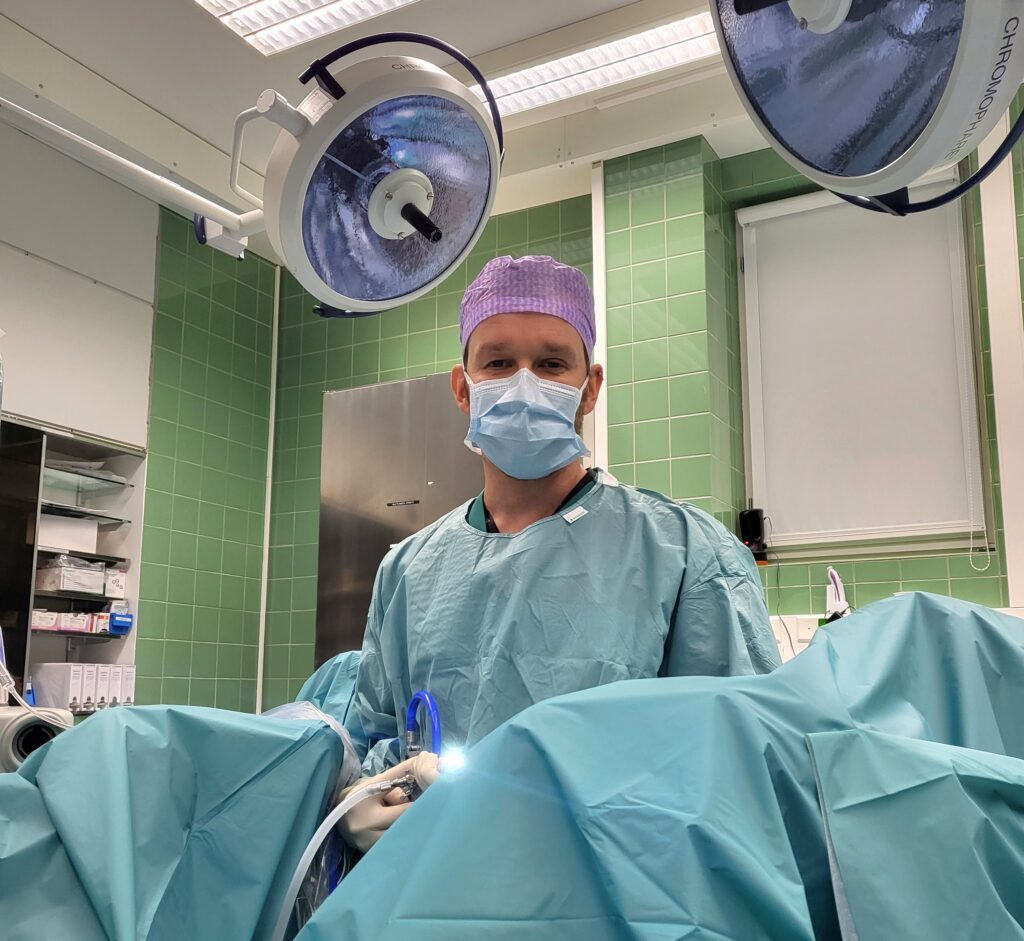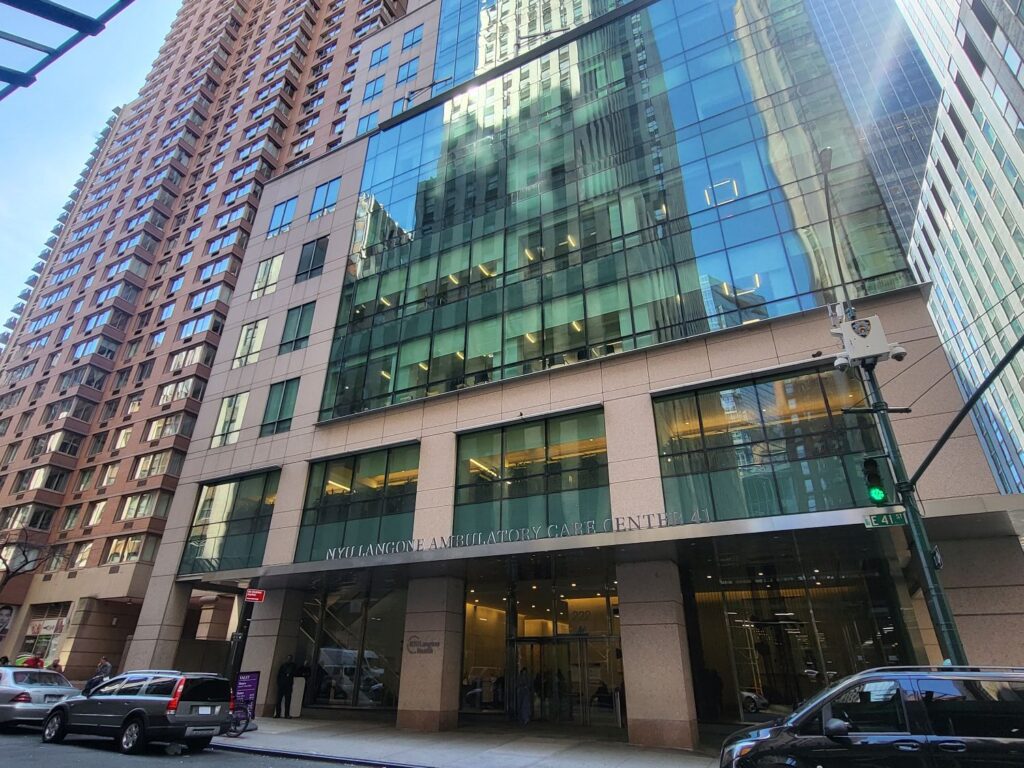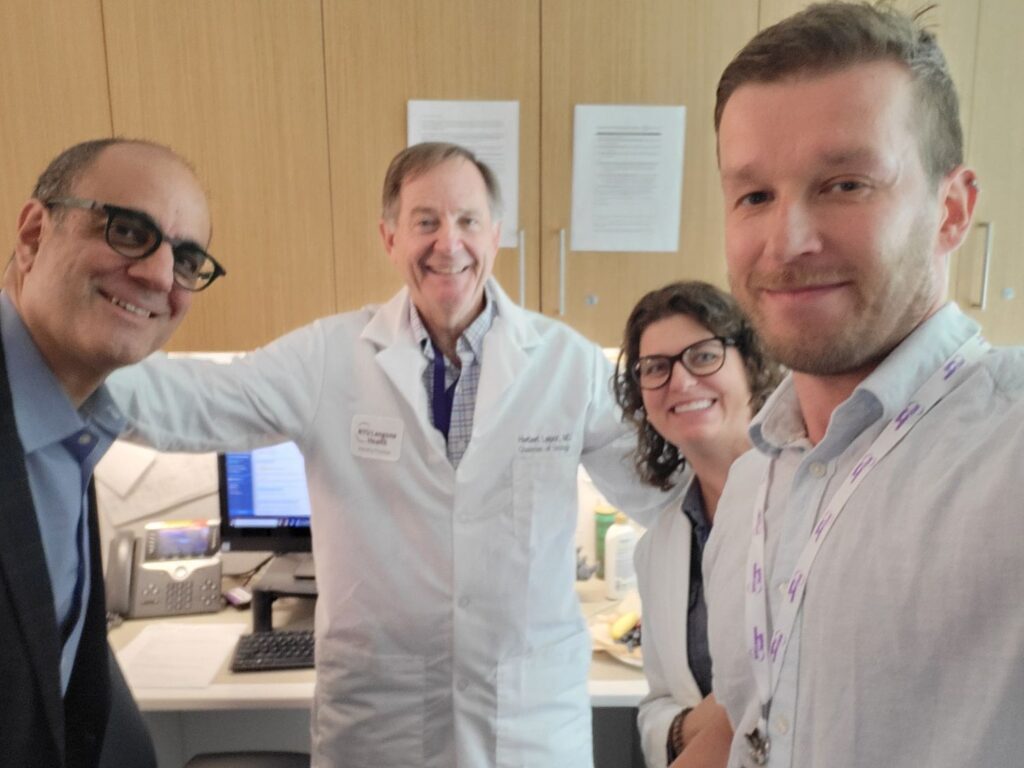Doctor of Medicine and LL. M. Juha Knaapila familiarised himself with urology treatment practices and research, in one of the world’s top centres of excellence, with the help of the TYKS Foundation’s travel grant. The visit gave new perspectives, for example, for local treatments of prostate cancer. In addition to clinical findings, researcher contacts were also made during the trip.
“I am a 40-year-old urology specialist, and I am particularly interested in urologic oncology. I chose urology as my specialisation because of its wide-ranging nature: urology is a surgical field with a wide range of procedures in terms of scope.
The field offers plenty of small-scale procedures, urinary tract endourology and traditional open and laparoscopic surgery. Furthermore, outpatient clinic work is also meaningful patient care, not just surgery/no surgery decisions. In urology, we treat both functional urinary tract diseases and provide extensive treatments for urological cancers. We also conduct scientific research to develop treatments. TYKS’ Clinic Visit Programme offered the opportunity to visit an interesting foreign unit for three months. I wanted to familiarise myself with the best units in the world, outside Europe, in terms of clinical and research activities. Unfortunately, my original plan for the Memorial Sloan Kettering Cancer Center in New York didn’t work out, but I got into another high-quality university hospital, NYU Langone Hospital, where I got a three-month clinical observer position.

The TYKS Foundation grant was crucial for my visit to the clinic as, compared to Finland, the price level in New York is two to three times higher, and the absence of on-call compensation meant fewer earnings. Furthermore, the TYKS Foundation has also funded the research on my doctoral dissertation, for which I am very grateful to the Foundation.
Urological cancers at the outpatient clinic and in the operating room
In NYU Langone, I familiarised myself with the treatment of urological cancers, both in the operating room and at the outpatient clinic. I also established contacts with the local top researchers, in order to launch research cooperation. My main observation was that, although urology is a highly specialised field based on international treatment recommendations and standards, in practice, things are done in very different ways to achieve the same goal. This was the case, for example, in the treatment of the main cancers in urology, bladder and prostate cancer.
Increased potential in the local treatments of prostate cancer
In the United States, local treatments for prostate cancer are at a completely different level than in Finland. In NYU Langone, patients with middle-risk prostate cancer were treated with different energy sources, depending on their situation. Local treatments based on different energy forms include freezing (cryoablation) and High-intensity focused ultrasound (HIFU). The research design also used Irreversible electroporation (IRE). Open or robot-assisted prostate removal surgery is only performed on patients with a high-risk local disease. All forms of treatment were equally available.

In Finland, by contrast, in active treatments, prostate removal surgery and radiation therapy are standard treatments. Local treatments are only tested on a very small scale in our research patients. In practice, these treatments used in the United States are not available in Finland. Then again, the importance of radiation therapy in the United States is lower, which may also be explained by financial reasons, as the treating urologist does not provide radiation therapy, i.e. does not earn money from it.
Local treatments have little adverse effects on the quality of life, unlike radical treatments of prostate cancer, i.e. surgery and radiation therapy. Surgical treatment almost always affects erection and continence, whereas radiation therapy can develop, even after a long period of time, very difficult and unpredictable effects on bladder function, and may even cause new cancers. As the disease, in most cases, is slow-progressing and medium-risk at most, local treatments are a very intriguing approach. Moreover, the treatment can always be repeated if the disease reoccurs, which is not possible, with the same form of treatment, regarding surgery or radiation therapy.
I plan to bring more local treatments to Finland in the future, so that the unit would have access to several different energy forms, starting with the IRE treatment that I find most interesting and possibly the most cost-effective.
Challenging bladder cancer
In the United States, regarding urinary bladder cancer, for a disease growing in the muscle layer of the bladder and for other high-risk diseases, the treatment line is very conservative, in case the irrigation treatments (BCG treatments) fail. In Finland, in such a case, the next step is usually bladder removal operation, which is a very extensive and heavy procedure with significant adverse effects on the quality of life. For example, the majority of patients need a urinary stoma, which affects their body image. Despite this, half of the patients die of their disease.
In the United States, the so-called multimodality treatment of bladder cancer, which includes extensive endoscopic tumour removal and radiation therapy of the bladder, combined with cytostatic therapy, is used considerably more extensively than in Finland. These treatments have produced comparable results in the mortality of bladder cancer, compared to bladder removal surgery, and the treatment is already recommended as an alternative to it in European treatment recommendations. Unfortunately, for some reason, such treatment has not become established in Finland. In addition, different cytostatic agents were used in various ways, to supplement the maximal endoscopic removal of the tumour in non-muscle-invasive diseases, after irrigation treatments failed. In NYU Langone, cytostatic agents’ gels were used in ureter and renal cancer patients even in situations where, in Finland, the kidney and ureter would be removed.

Urology colleagues from left to right; Samir Taneja, Herbert Lepor, Katie Murray and Juha Knaapila.
Surgical operations were quite similar to those in Finland. However, traditional endoscopic surgery was hardly known; everything was done with a robot. Then again, prostate removal with open surgery, which is already history in Finland, was still used by one experienced urologist. With the experience of five thousand procedures and precise patient selection, this urologist performed the operations successfully.
NYU Langone conducts extremely high-quality research, for example, in the development of intra-bladder cytostatic therapy that is administered in different ways. Research resources and therefore also projects were at a completely different level compared to Finland.
It was also exciting how many of the science world “celebrities” I had referred to in my publications, for example, I got to see face-to-face during my visit.
Money talks
The working culture in the United States is demanding. There is no retirement age, so a 70-year-old doctor is no exception. Working days last for 10-12 hours. Specialising physicians work 16 hours a day and spend 2-3 nights a week at work. Specialists are practically millionaires, and the salary of specialising physicians is somewhat the same as in Finland. Unfortunately, financial issues also always affect treatment policies. The doctor, the hospital and the insurance company must make a profit, and too often, albeit not always, from a medical point of view, the patient’s interest was not a priority in this setting. The system is also very expensive and inefficient.
After my journey, I feel that I defend the Finnish public-focused model and welfare society even more, as a high-quality, financially efficient and equal system.”

